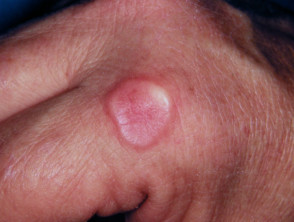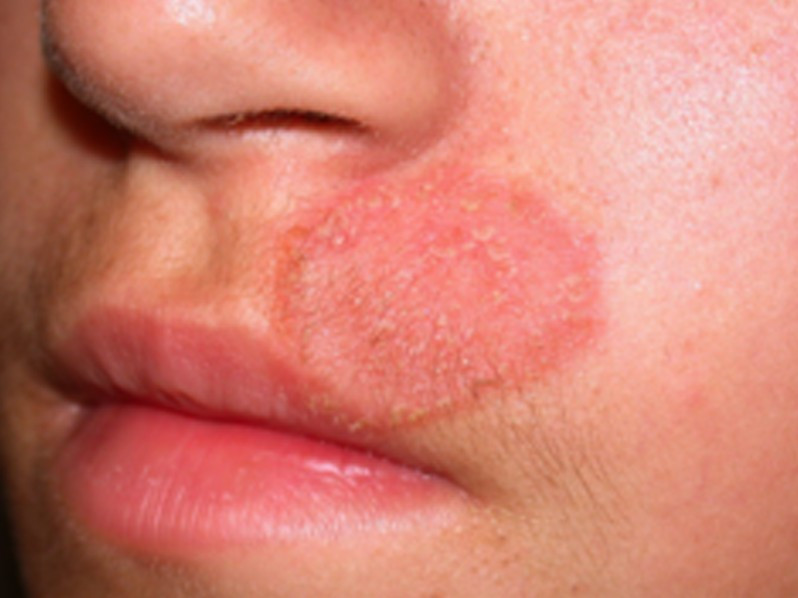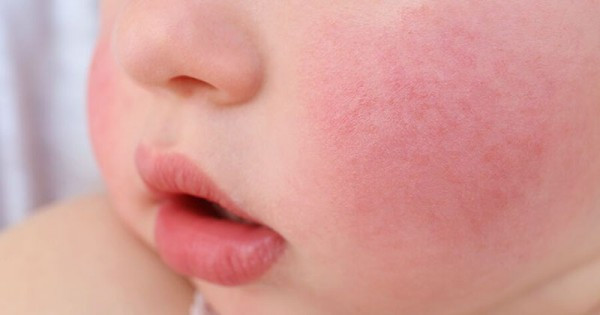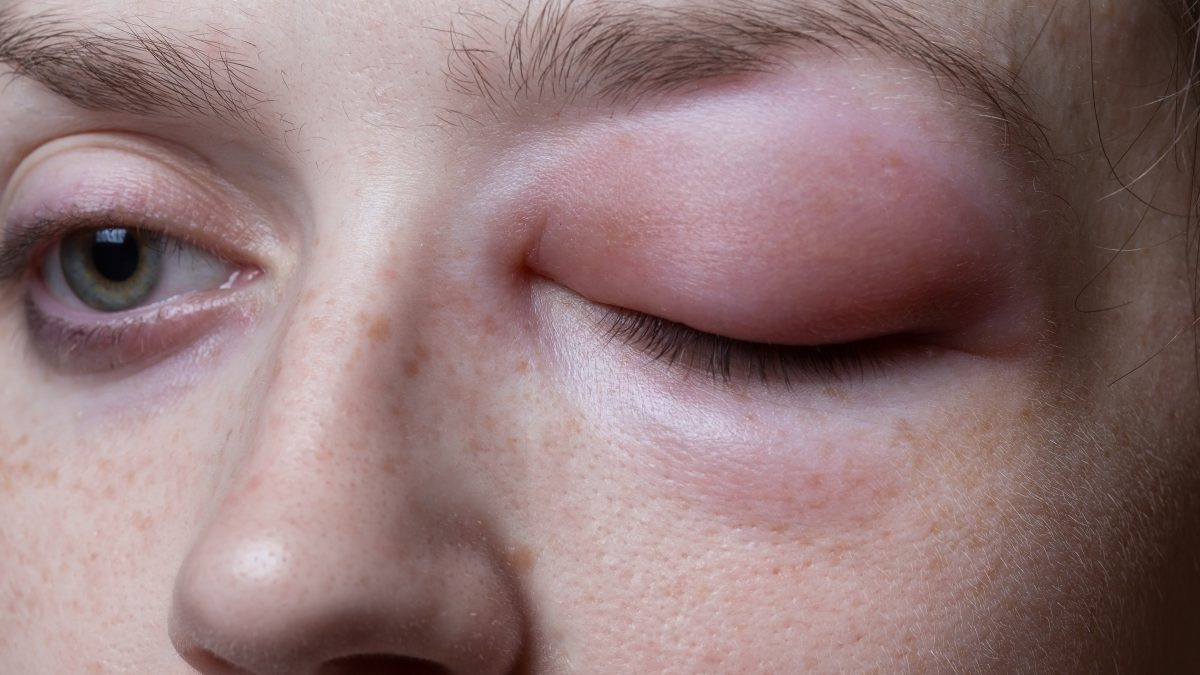Definition
Erysipelas is an infection that affects the skin's upper dermis layer and lymphatic vessels. This infection is caused by bacteria, which usually develop as bacteria invade layers of the skin from open wounds. Erysipelas on the face will cause a soft, bright red rash on the facial skin. Because of its intense red rash, erysipelas is known as "St. Anthony's Fire." Additionally, erysipelas may result in lymphatic vessel blockage and edema in the upper skin layers. Doctors typically use antibiotics to treat erysipelas, and inadequate care might lead to more serious complications.
In addition to erysipelas, there is a skin condition known as cellulitis. The difference between erysipelas and cellulitis is that cellulitis affects the dermis and subcutaneous tissue, the fat layer beneath the skin. Thus, erysipelas are more likely to develop vesicles with clear fluid, but cellulitis is more prone to the formation of abscesses (cavities filled with pus). Cellulitis typically has a slower progression rate compared to erysipelas. Unlike erysipelas, which manifest as a mild red rash with well-defined borders, cellulitis is characterized by a red rash with ill-defined borders.
Causes
Often, erysipelas are caused by Group A beta-hemolytic streptococcus bacteria (Streptococcus pyogenes) infections, which can also cause pharyngitis or sore throat inflammation. The face and hands are frequently impacted, as individuals with a sore throat frequently cough and automatically cover the mouth with their hands, thereby facilitating the spread of bacteria to the skin. Moreover, other cases of erysipelas can be caused by other bacteria, such as Staphylococcus aureus, Methicillin Resistant-strain Staphylococcus aureus (MRSA), Streptococcus pneumoniae, Klebsiella pneumoniae, Yersinia enterocolitica, Escherichia coli, Staphylococcus warneri, and Haemophilus influenzae.
An open wound or exposed skin area typically serves as an entry point for bacteria that cause erysipelas. Subsequently, the bacteria proliferate rapidly and spread through small lymph vessels beneath the skin's surface. The immune system initiates a defense mechanism to combat bacteria, resulting in the dilation of nearby blood vessels and swelling of the surrounding tissue.
Risk factor
Your chance of developing erysipelas can be raised by several factors, such as:
- Experiencing a skin injury, such as wounds, bug or animal bites, or surgical wounds
- Certain skin conditions, such as dermatitis, impetigo, and fungal infections of the skin
- Compromised lymphatic system
- Obesity
- History of binge alcohol drinking
- Uncontrolled diabetes
- Venous insufficiency
- An impaired immune system can be caused by certain treatments (ex.: chemotherapy, etc.) or certain diseases (HIV/AIDS)
- Individuals that are 60 years of age or older
- Pregnancy
- History of erysipelas
- History of radiotherapy
Symptoms
The following symptoms typically occur four to forty-eight hours before the skin rash develops, they are:
- Fever
- Shivering in body
- Tiredness
- Lack of appetite
- Vomiting
- Headache
Following that, signs and symptoms may manifest as a rash with the following features that develop on the skin, usually in the arms, legs, and face:
- It appears shiny and enlarged
- The color of the rash is bright red
- The texture is smooth and soft when it is touched
- Severe cases of erysipelas exhibit fluid-filled vesicles
- The rash has a well-defined border, and the affected and non-affected areas can easily be distinguished
- The rash has a raised surface
- Red streaks over the affected skin
- In serious cases, the rash can turn purplish or black
Diagnosis
The doctor will start by asking questions about your condition to diagnose you. The physician will inquire about your symptoms, including the location, duration, and how the rash appears, as well as any pre-existing symptoms that may be associated with its onset. In addition, the physician will ask for your medical history, and they will ascertain risk factors that could contribute to the onset of erysipelas. The doctor will then examine your skin and the rash up close during a physical examination. Typically, clinicians can diagnose erysipelas by analyzing the information gathered from the patients and observing the affected skin, as erysipelas exhibit unique characteristics. In most cases, additional diagnostic tests are not required and are rarely performed. The physician may recommend a blood test if indications of bacterial infection are detected in the blood under specific circumstances.
A blood test may additionally provide insights into:
- Elevated concentrations of leukocytes, which may arise due to tissue injury and bacterial infections
- Elevated concentrations of c-reactive protein (CRP), a hepatic enzyme produced at higher levels during inflammation
- Having a positive blood culture signifies the presence of a bacterial infection
In certain instances involving deep infections, Computed Tomography (CT) or Magnetic Resonance Imaging (MRI) may be required to determine the spread of infection.
Management
Oral antibiotics are the primary treatment for erysipelas. Doctors may advise you to receive intravenous antibiotics if the infection is serious. Commonly used antibiotics for the treatment of erysipelas are as follows:
- Oral, intramuscular, or intravenous penicillin
- Vancomycin antibiotics are used for treating facial erysipelas caused by MRSA bacteria
- Erythromycin can be used as an alternative to penicillin, particularly for individuals who have allergies to penicillin
In the event of recurrent infections, doctors may prescribe a long course of antibiotics as a preventive measure against future infections. Doctors prescribe antibiotics with antiallergic medicines, minerals, and vitamins to enhance their effectiveness. The typical duration of oral antibiotic administration ranges from 7-14 days.
Additionally, other alternative methods can be taken to alleviate pain and discomfort while also accelerating the process of recovery, including:
- Ensure that the area of infection is elevated above the surface below and maintain regular movement to prevent the formation of blood clots
- The affected area could be treated with cold compresses
- Apply lotion to alleviate dry and chapped skin
- Analgesics to relieve pain, including ibuprofen
- Once the infection has resolved, wear compression stockings
Complications
People with erysipelas rarely experience complications. Nevertheless, on certain occasions, complications may arise. Bacteria can spread to bones, joints, and heart valves upon entering the bloodstream. Consequently, this condition is known as bacteremia. Additional potential complications that could happen are:
- Feet edema
- Septic shock, is a life-threatening infection characterized by organ failure and hypotension
- Cardiac valve infection
- Post-streptococcal glomerulonephritis, a renal disorder that primarily impacts children after they are infected with streptococcus bacteria
- Gangrene, is a pathological disease characterized by the necrosis of bodily tissues resulting from inadequate blood perfusion
- Thrombophlebitis, an inflammatory condition affecting the blood vessels
- Recurrent infections
Prevention
Erysipelas can be prevented by a few different strategies. This includes ensuring that your skin remains hydrated to stay healthy. To further reduce the risk of skin infection, you should also prevent getting wounds, scratches, and dry skin. Consider using long-term antibiotics like penicillin to prevent the illness from recurring. Precautions to prevent bacterial infections include:
- Frequent handwashing is key
- Use an alcohol-based cleanser
- Prevent dryness of the skin by applying moisturizer
- Follow your doctor's instructions when taking antibiotics
- Try not to scratch your skin
When to see a doctor?
Seek medical advice if you experience dermatological issues or symptoms indicative of erysipelas. Prompt action can avert the disease from getting more severe and alleviate your distress.
Looking for more information about other diseases? Click here!
- dr Ayu Munawaroh, MKK
Brannon, Heather L. What is Erysipelas (St. Anthony’s Fire)?. (2020). Accessed March 16, 2022, from https://www.verywellhealth.com/erysipelas-st-anthonys-fire-1068816
Fathi, Ramin. Erysipelas. (2020). Accessed March 16, 2022, from https://medlineplus.gov/ency/article/000618.htm
Gomez, Jannet. Erysipelas. (2016). Accessed March 16, 2022, from https://dermnetnz.org/topics/erysipelas
Michael, Youstina, et al. Erysipelas. (2021).Accessed March 16, 2022, from https://www.ncbi.nlm.nih.gov/books/NBK532247/
Rehmus, Wingfield E. Erysipelas. (2021). Accessed March 16, 2022, from https://www.msdmanuals.com/professional/dermatologic-disorders/bacterial-skin-infections/erysipelas
Sachdev, Poonam. What is Erysipelas?. (2021).Accessed March 16, 2022, from https://www.webmd.com/skin-problems-and-treatments/what-is-erysipelas
Seymour, Tom. Everything You Need to Know about Erysipelas. (2017). Accessed March 16, 2022, from https://www.medicalnewstoday.com/articles/317973
Starr, Oliver. Cellulitis and Erysipelas. (2020). Accessed March 16, 2022, from https://patient.info/skin-conditions/skin-rashes/cellulitis-and-erysipelas












